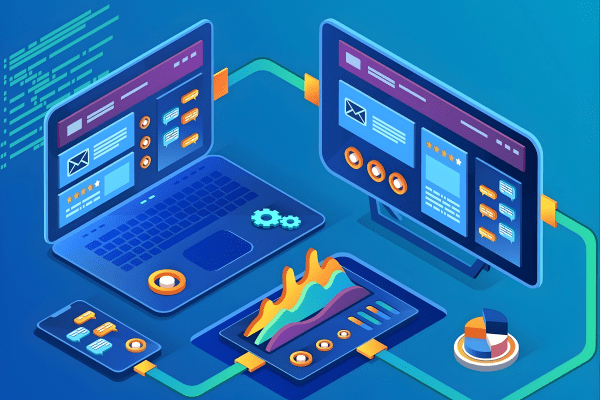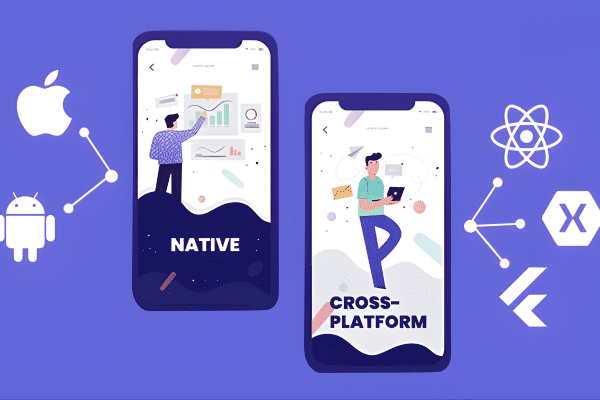The way businesses build apps is changing quickly. Users no longer rely on one device or platform. They move from Android to iOS, from laptops to tablets, and expect apps to work smoothly everywhere. This shift has made cross-platform app development one of the most practical and efficient approaches for modern software teams.
Companies today want faster development, lower costs, and a consistent user experience across all devices. At the same time, they cannot afford long release cycles or maintaining separate codebases for iOS and Android. This is where cross-platform app development stands out. It allows development teams to build a single app that runs across multiple platforms without compromising quality or performance.
Whether it’s a startup building an MVP or an enterprise launching a complex product, this approach supports speed, flexibility, and long-term scalability. More importantly, it helps businesses meet users where they already are—across different devices and operating systems.
One of the most significant advantages of cross-platform development is the ability to use powerful, flexible programming tools. To choose the right tool, it’s essential to understand which languages and frameworks work best. For a deeper look at the options, check out our guide on the best cross-platform app development languages.

1. What Is Cross-Platform App Development?
Cross-platform app development is the process of creating mobile applications that run on both iOS and Android using a single codebase. Instead of writing separate code for each platform, developers use frameworks like Flutter, React Native, and Xamarin to build apps faster and more efficiently.
This approach ensures consistent design, shared functionality, and fewer development delays, making it ideal for businesses trying to reach a wider audience without doubling their workload.
2. Why It’s Becoming the New Standard
Faster Time to Market
Businesses often need to launch products quickly to stay competitive. Cross-platform development reduces development time by allowing teams to build once and deploy everywhere. This means faster launches, quicker updates, and shorter feedback loops.
Reduced Development Costs
Maintaining separate development teams for iOS and Android can be expensive. Cross-platform frameworks cut this cost by requiring only one team and one codebase. The result? More efficient budgets and smoother project management.
Consistent User Experience Across Devices
Today’s users expect apps to look and feel the same across all platforms. Cross-platform development ensures consistency in UI, design elements, navigation, and interactions. This boosts trust, usability, and brand identity.
Easier Maintenance and Updates
With a single codebase, updates become much simpler. Fixing a bug or adding a new feature automatically applies to all platforms. This helps teams deliver patches faster and keeps the app secure and stable.
Strong Community Support and Modern Frameworks
Major tech companies and large developer communities back frameworks such as Flutter and React Native. These ecosystems offer ready-made components, plugins, and continuous updates that speed up and smooth out development.
3. Common Use Cases for Cross-Platform Development
MVPs for Startups
Startups need to move quickly. Cross-platform development helps them validate ideas without overspending.
Enterprise Applications
Large companies with internal and external apps benefit from having one unified codebase.
E-commerce Applications
Retail and shopping apps need consistent experiences across devices, making cross-platform development ideal.
Social and Lifestyle Apps
Apps that focus on user engagement, content delivery, or community building often use cross-platform frameworks for faster scalability.
4. Popular Frameworks Used Today
Flutter
A Google framework known for high speed, beautiful UI components, and consistent performance.
React Native
Created by Meta, it uses JavaScript and allows quick development with reusable components.
Xamarin
A Microsoft-backed tool ideal for apps built with .NET and C#.
Each framework has its strengths, but all offer the same goal—building high-quality apps for multiple platforms without extra effort.
5. How Software Agencies Benefit
Software agencies gain several advantages by adopting cross-platform app development:
- Better project timelines
- Lower resource requirements
- Ability to handle more projects at once
- Consistent delivery quality
- Stronger client satisfaction
Clients appreciate faster delivery and lower costs, while agencies enjoy streamlined workflows and reduced development stress.

Conclusion
Cross-platform app development has transformed the way businesses and development teams build digital products. With the increasing pressure to launch fast, stay competitive, and deliver seamless user experiences, relying on separate codebases for each platform no longer feels practical or efficient. Instead, cross-platform solutions enable companies to focus on what truly matters—meeting user needs with reliable, engaging apps.
This approach also supports long-term growth. As apps evolve, updates can be made quickly and applied across all platforms at once, reducing downtime and ensuring ongoing stability. For businesses, this means fewer delays, lower costs, and better use of internal resources. For development teams, it results in a smoother workflow, simpler debugging, and the ability to focus on innovation rather than repetitive tasks.
Most importantly, cross-platform app development makes technology more inclusive. When an app performs consistently across Android, iOS, desktops, and tablets, more users can enjoy the same experience without feeling left out or limited by their device choice. This broader accessibility helps businesses build stronger audiences and long-lasting customer relationships.
As the digital world continues to grow, this development style is becoming the new standard—not because it’s a trend, but because it solves real challenges faced by modern teams. It combines speed, efficiency, and user experience in a way that traditional development methods struggle to match. For any business planning its next digital product, cross-platform app development offers a smart, future-ready path.











